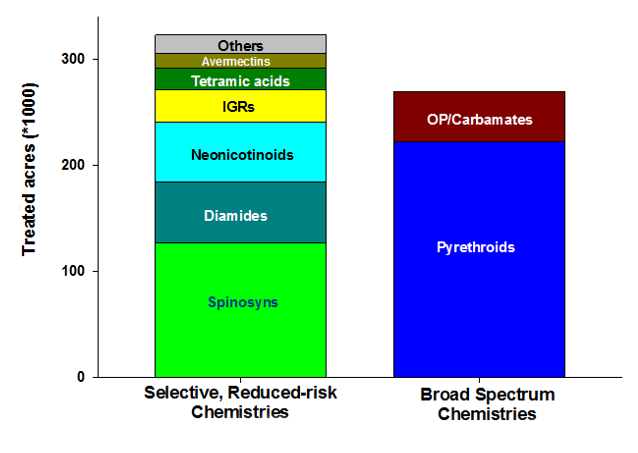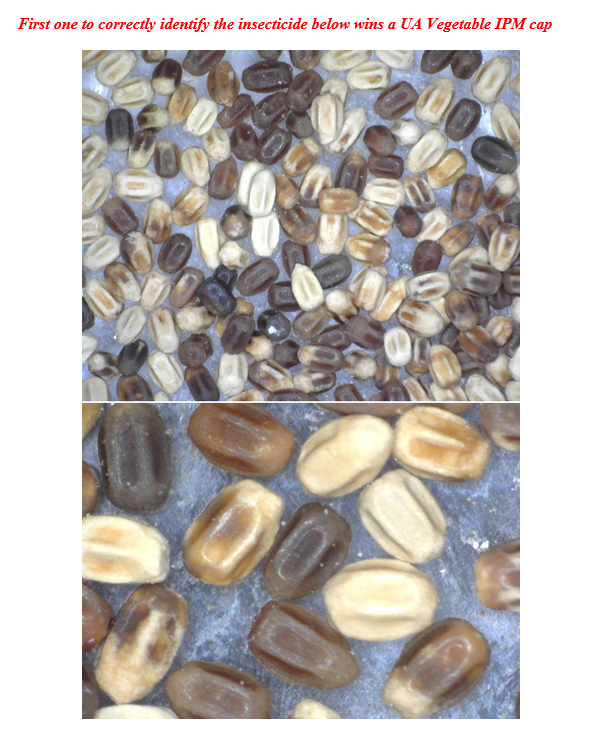-
Jun 13, 2018Insecticide Usage on Arizona Lettuce, 2017-18The results of our annual Lettuce Insect Losses surveys continue to show interesting trends in insecticide usage on desert lettuce. In general, the most commonly used insecticides in fall and spring lettuce correspond directly to the key pests that typically occur during these growing periods. By far, the pyrethroids applied both as foliar sprays and through chemigation at stand establishment were the most commonly used insecticide class. Not surprising. Over the past 14 years, pyrethroid usage has remained steady and the reason for this is quite clear. Pyrethroid s are the most inexpensive and safe broad-spectrum insecticides still available for use in tank-mixtures for effective control of beetles, crickets, plant bugs and some Lepidopterous larvae and adults (looper and corn earworm). The overall use of OPs and carbamates continues to decline. Lannate (methomyl) usage was up slightly and and acephate usage was down on spring lettuce this season due to heavier thrips pressure. In the past few years, OPs/carbamates have been increasingly replaced by several reduced-risk chemistries, of which the spinosyns are the most commonly used class of selective insecticides. In 2017, >95% of the fall and spring lettuce acreage in the desert was treated with > 2 applications of Radiant. Their use against both lepidopterous larvae and thrips has remained steady since they were first registered. The Diamides (Coragen, Voliam Xpress, Vetica, Belt) were another commonly used selective chemistry in lettuce this season. Since they were first registered in 2008, PCAs have steadily incorporated this new chemical class into their management programs. The use of foliar diamides was down in 2017, presumably because of the loss of the flubendiamide tolerance; this is evident by the reduced use of Belt and Vetica. The tetramic acid chemistry (Movento) was used slightly less on fall lettuce in 2016 but remained about the same on spring lettuce consistent with heavy aphid pressure in both 2017 and 2018. Another important class of chemistry used in fall and spring lettuce are the neonicotinoids driven primarily by soil-applied imidacloprid for whiteflies and aphids. The usage of imidacloprid on both fall and spring lettuce has increased markedly since 2009 and was used on > 90% of the percentage of their acreage with selective, reduced-risk products than with the broadly toxic, older chemistries. To view a summary of the estimated insecticide usage by chemical class, as well as the most commonly used insecticides on fall and spring lettuce this past growing season, go to Insecticide Usage in Desert Lettuce, 2017-18.

 To contact John Palumbo go to: jpalumbo@ag.Arizona.edu
To contact John Palumbo go to: jpalumbo@ag.Arizona.edu










